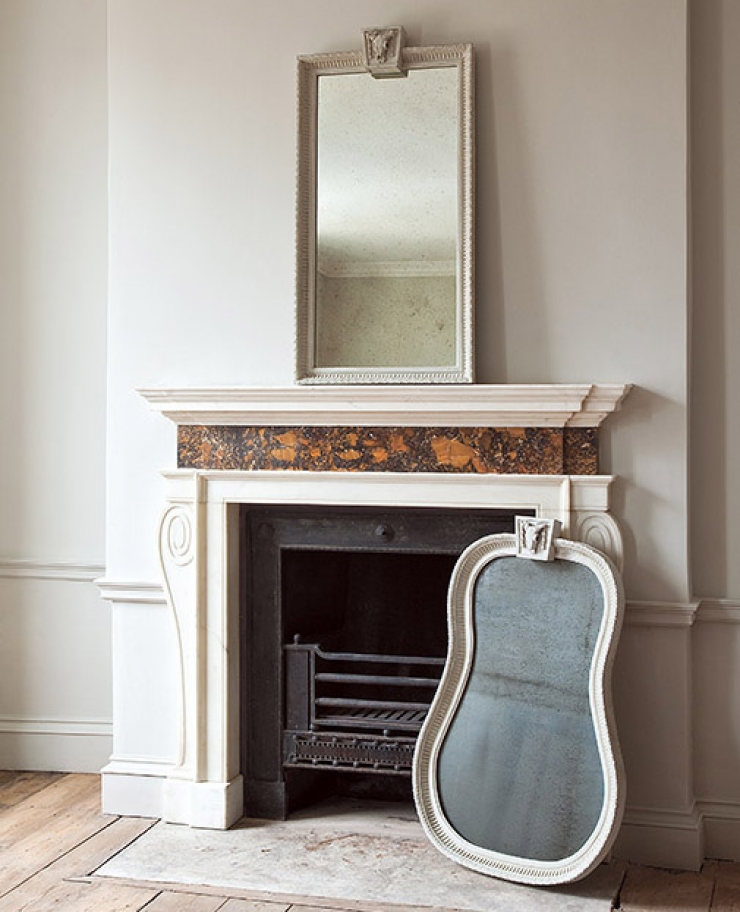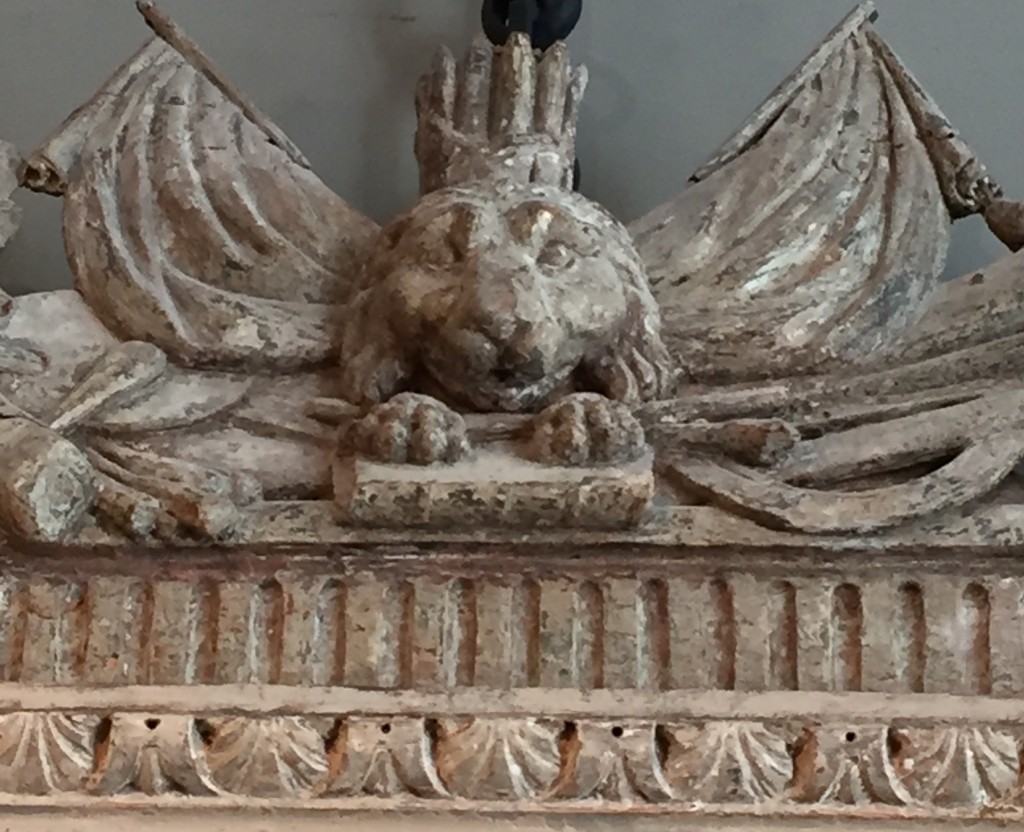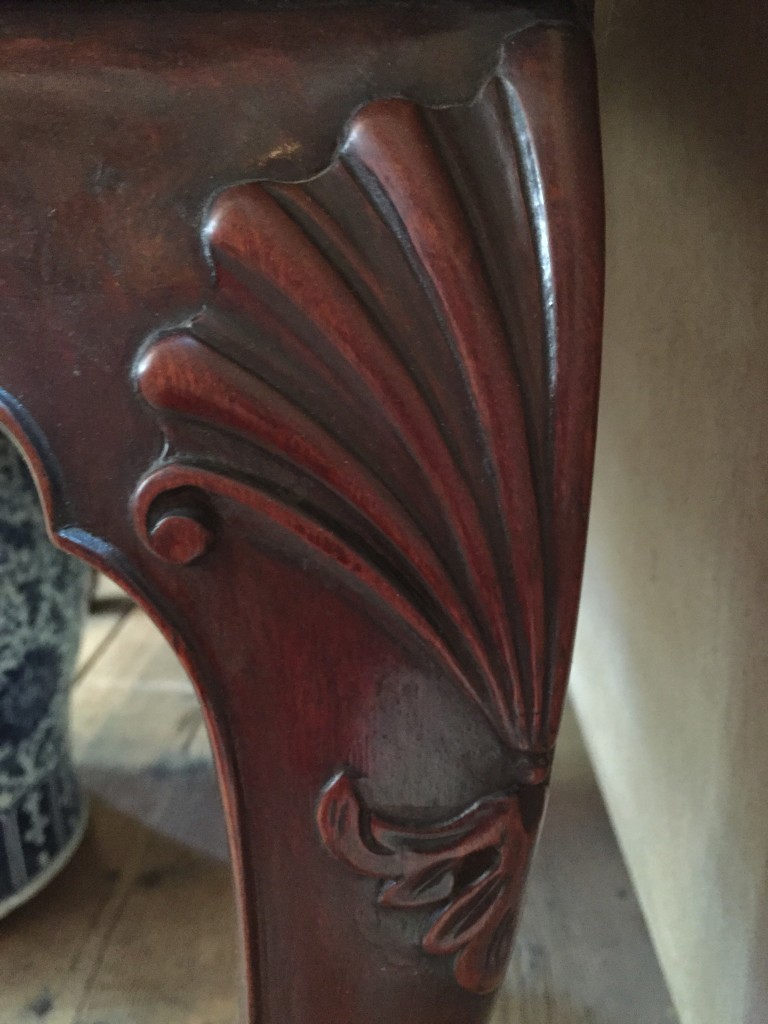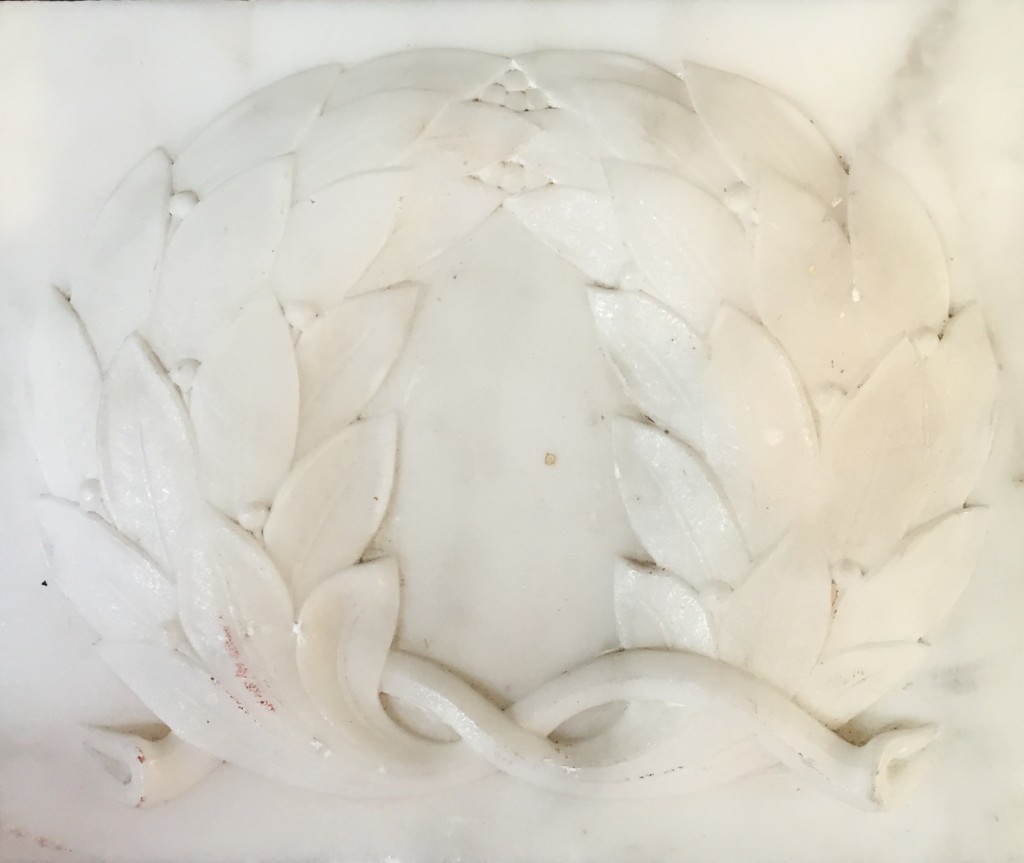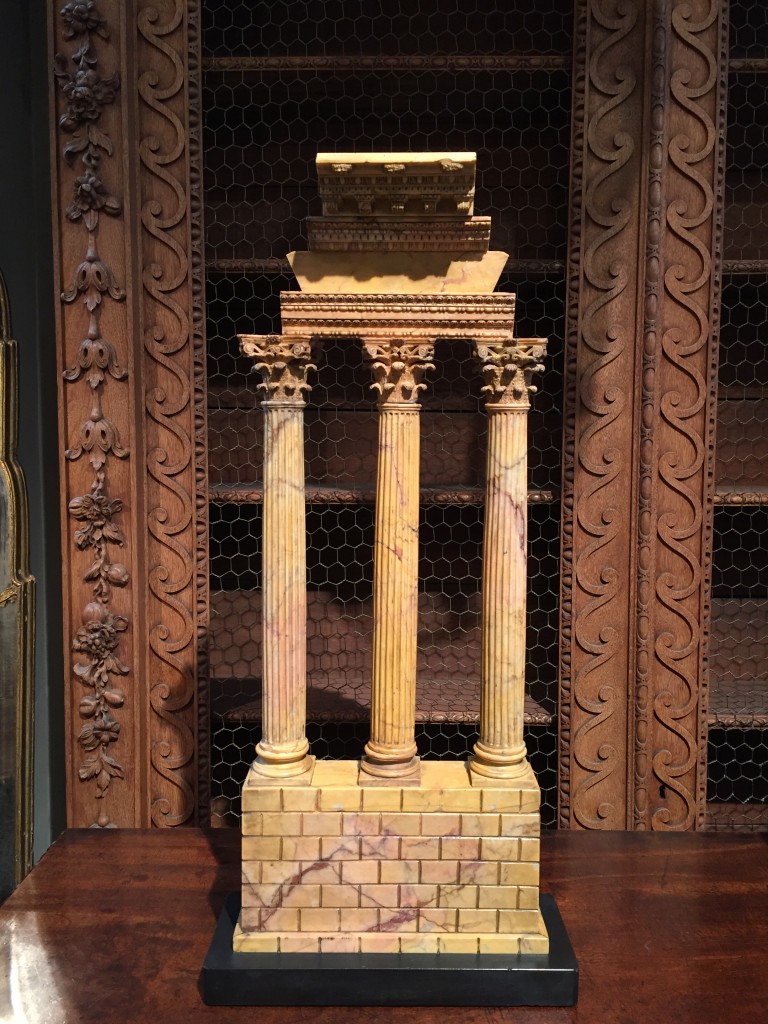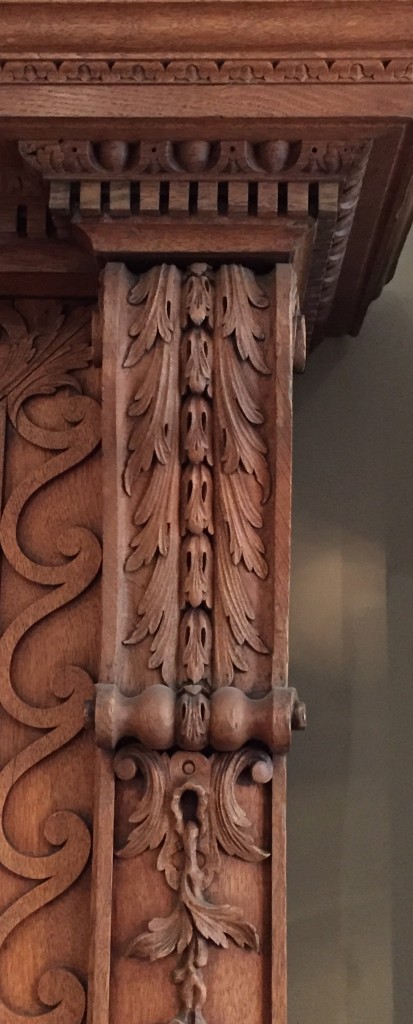Founded upon proportion and symmetry, design in the Georgian period was rooted in the architecture of Greece and Rome. From the houses that were built, to the furniture and objects that were designed to fill them, their craftsmanship stand the test of time throughout the centuries. Many of the decorations used in Greek and Roman sculpture are interwoven into Georgian furniture and architectural design.
The Bucranium (from the term Latin term bucrania meaning ‘skull of an ox’) is an important and symbolic motif that William Chambers used prolifically, and is one of my favourite motifs from the classical world. It originated through the practise of adorning Roman temples with sacrificial oxen covering them with garlands of fruit and flowers – an allegorical representation of plenty and abundance.
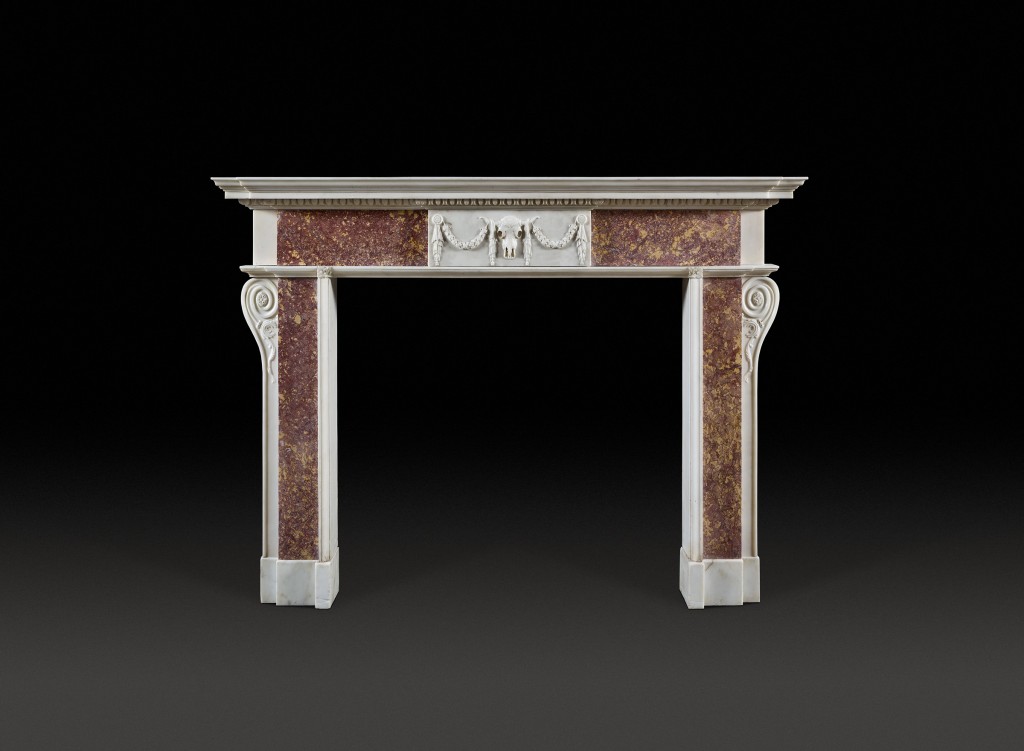
A superb George III neoclassical fireplace with Bucranium motif attributed to William Chambers.
The Bucranium was developed into a key motif of the Doric order, and later used in the Neoclassical revival of the late Georgian period. We have used the motif in two of our reproduction mirrors, the Bucranium mirror and the Convex Bucranium mirror.
The Bucranium mirror is a waist-shaped mirror that uses the motif as its keystone.
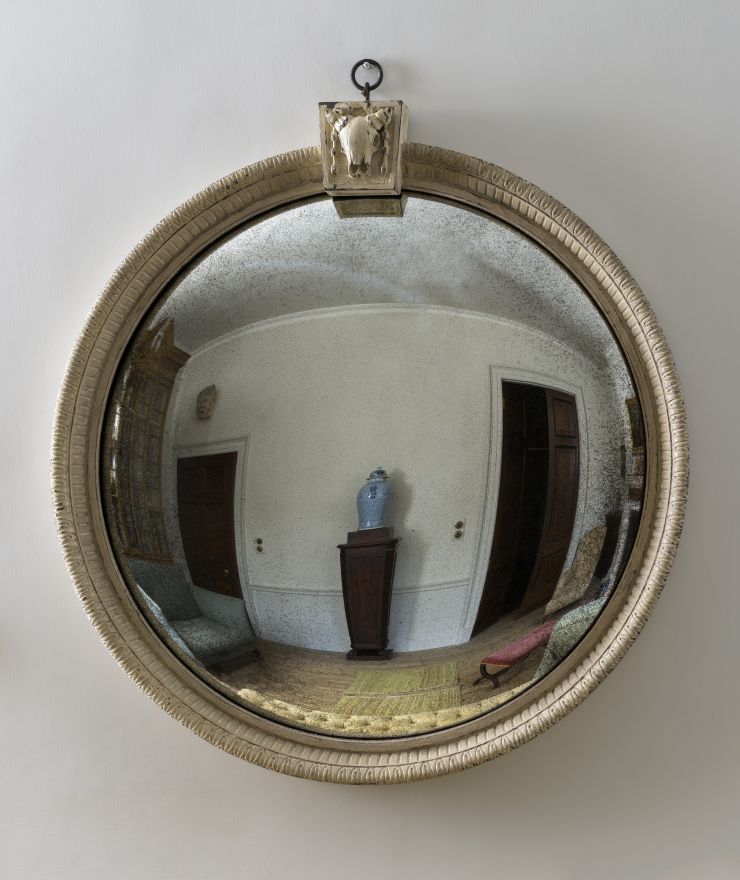 Our convex bucranium mirror also has a oxen skull as a motif and is constructed from 5 metres of tulip wood, with aged glass.
Our convex bucranium mirror also has a oxen skull as a motif and is constructed from 5 metres of tulip wood, with aged glass.
Another popular and much used symbol was the Lion, the guardian representing strength, courage and nobility, seen here as part of a George II mirror, surmounted by an emblematic trophy and leaf moulded border.
The lion’s paw foot was popularised by Thomas Chippendale in his furniture design; carved masks of lions were a favoured decoration on the knees of cabriole legs, the aprons of tables and consoles, and the arms of chairs and settees.
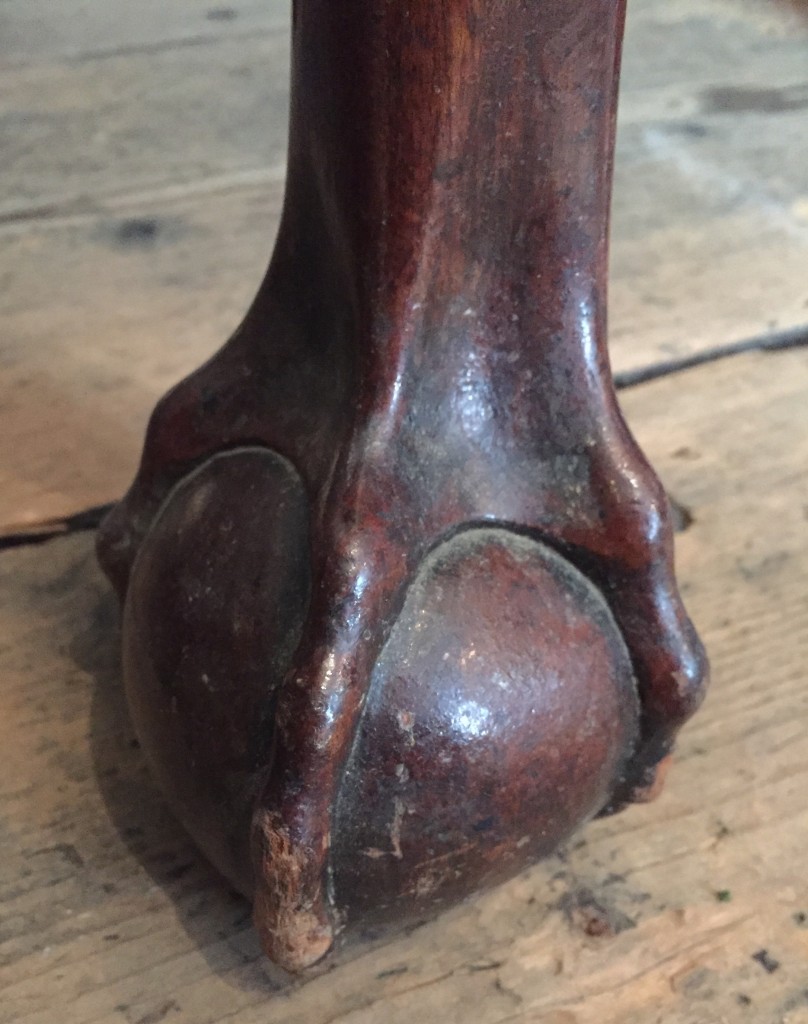
The clawed foot of a superb mid eighteenth century carved mahogany side table with original bardiglio top.
The three pronged claw is another motif used in Georgian furniture. Although still subject to scrutiny, many believe that the ball and claw design originated from Chinese imagery. Often illustrating a dragon’s claw clutching a jewel, pearl, or crystal ball, this mythological creature would have been seen to be protecting the ball shape (a symbol for wisdom or purity) from evil forces trying to steal it. Craftsmen between 1710 and 1750 are said to have transformed the ball and claw motif from a dragon, to a bird’s talon or lion’s paw.
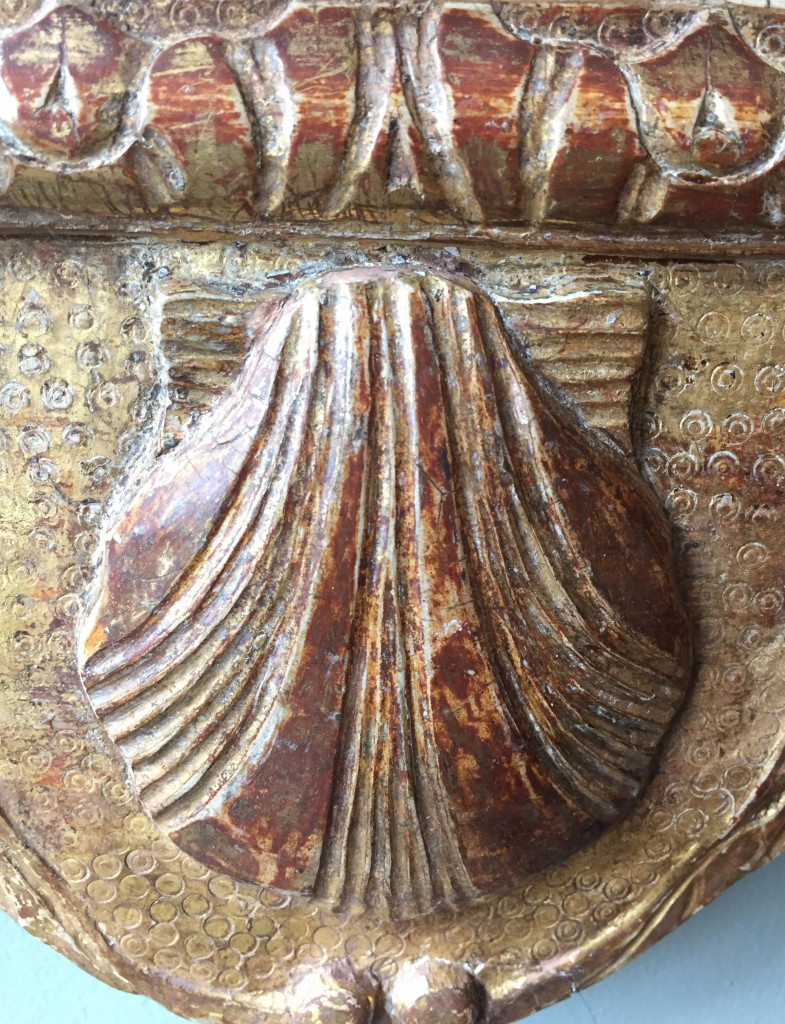
The shell motif is illustrated here from a superb mid eighteenth century carved mahogany side table with original bardiglio top.
The seashell, symbolising fertility, was important to the Greeks and Romans. It was associated with the Greek goddess Aphrodite, and her Roman counterpart, Venus.
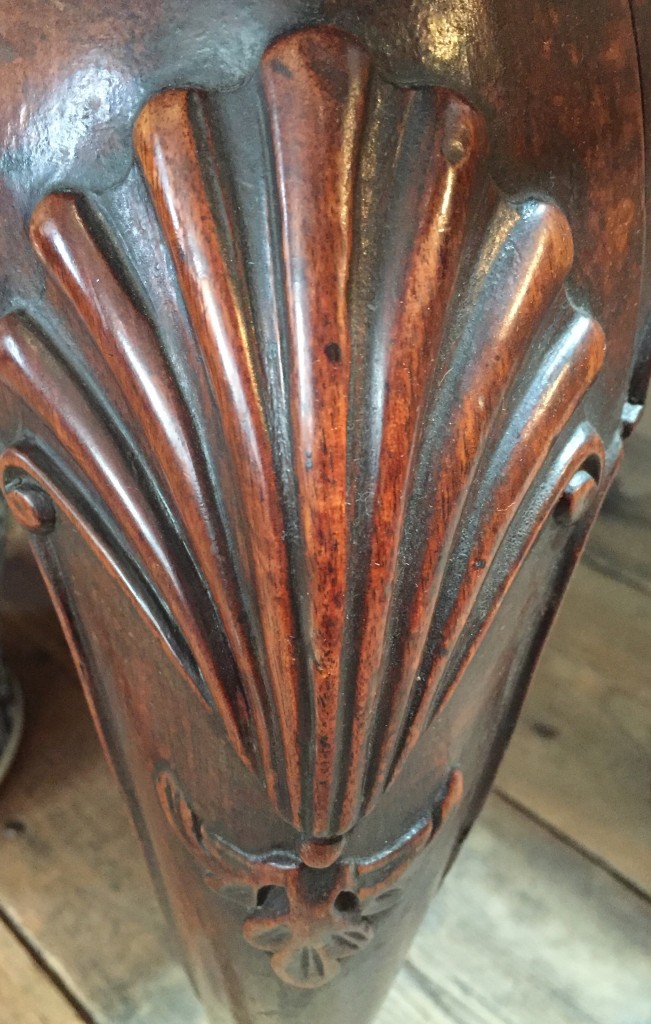
The Sea shell is also used on the legs of this superb mid eighteenth century carved mahogany side table.
Thomas Chippendale valued the proportion and symmetry of the scallop shell which he incorporated into his designs. This symbolic gesture was intended to reach out to the aesthetically educated person, many of whom would have travelled the Grand Tour and other parts of the world.
Later in the Georgian period of the Rococo movement, the shell was again widely used. The term Rococo derived from ‘Rocaille’ meaning Rock and the ‘coquille’ meaning shell.
Whilst the laurel represents victory in Roman and Greek symbolism, the acanthus represents continued life. As seen below, it was used on the capitals of Corinthian pillars, and widely used in Georgian chimneypieces and furniture.
According to the Roman writer Vitruvius, it was the Greek architect and sculptor Callimachus who invented the Corinthian order and created the symbolism of the acanthus leaf. History recounts that Callimachus saw a votive basket on the grave of a young girl, intertwined with the leaves of the acanthus plant; however much the graveyard keepers tried, they could not tame the growth. To this day, the acanthus leaf is synonymous with immortality.
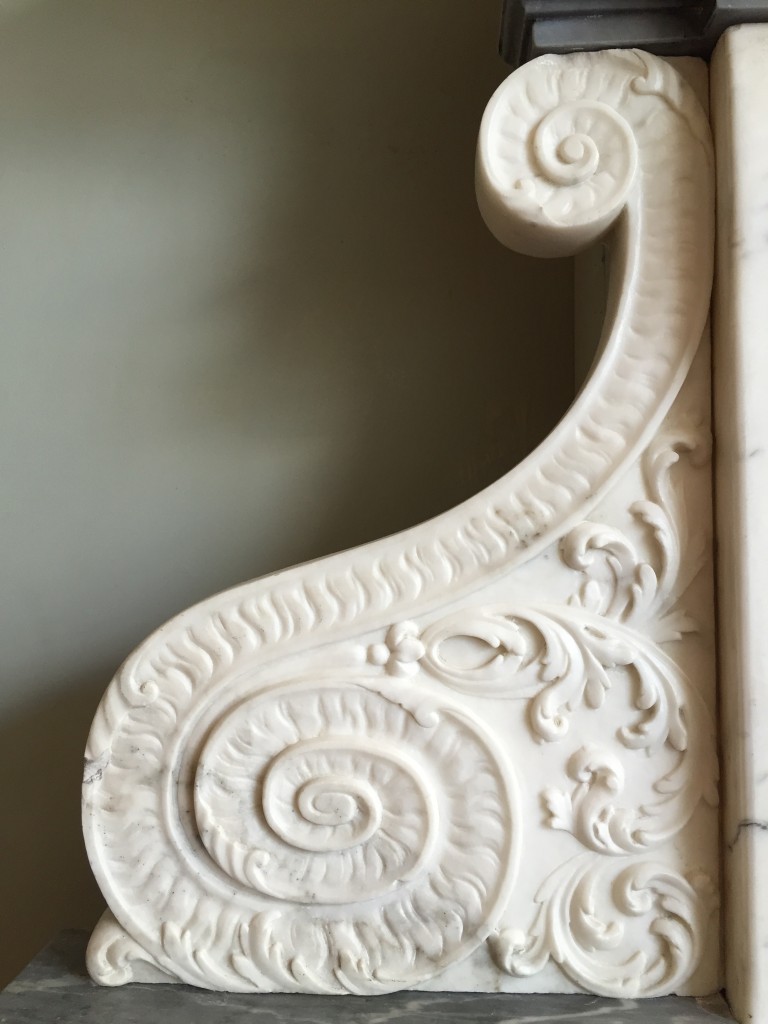
The Acanthus spray detail of this impressive and rare, early eighteenth century, English fireplace, circa 1700–1710.










